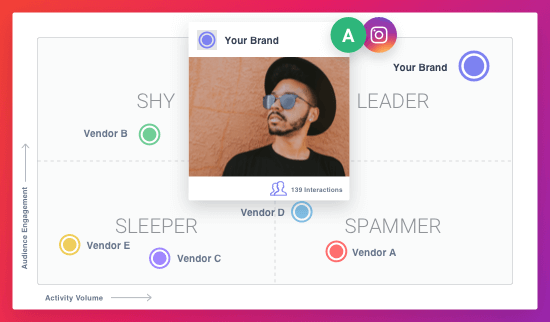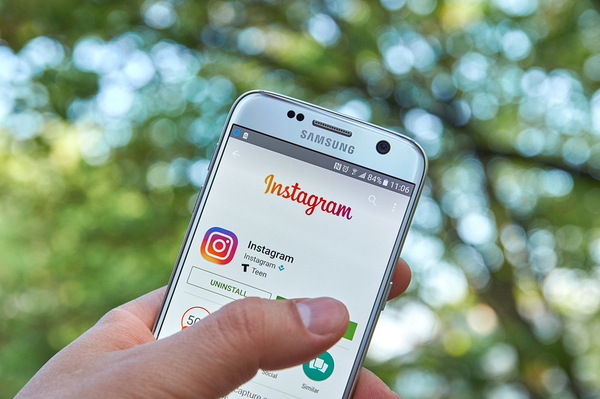How to Check for Fake Followers and Likes on Instagram


Even though technology allows us to do our own research on people or Influencers before partnering with them, there are still many documented cases of brands choosing to partner with accounts that have fake influencers and losing significant ROI.
Influencer marketing is a lucrative opportunity, but any marketing professional needs to audit their potential talent, and their audience, before moving forward. To help you make a smarter investment on influencer marketing, here are a few key ways for making sure your influencers’ followers and likes aren’t fake on Instagram.
Before we look into the specifics, it’s worth noting that there are a few things that even mega-influencers and celebrities suffer from.
Buying and selling fake influencers and likes is unfortunately a common practice, and this means that some fake pages may inevitably follow other influencers’ accounts. A few fake accounts isn’t necessarily a red flag, but we’ll get into more of the specifics of how to measure your influencers’ ROI below.
To get started, first start by seeing if your influencer has additional social media presence: TikTok, Twitter, YouTube, etc. If the content on these platforms appears similar to what you’re noticing on Instagram, chances are you’re in the clear. Check their website/blog as well, to make sure that the Instagram that you are working with is the one they are promoting on their website.
Second, dive into the comments on the influencer’s posts. If you’re seeing a lot of spam messages, duplicative comments, comments in other languages, or simple emoji comments, chances are you’re up against an influencer who has paid for followers and/or engagements. Additionally, take a quick peek at the profiles of some of their commentators; if these appear to be iffy accounts, this is another red flag.
A typical influencer with a real audience and a high engagement rate will always have comments which add conversation to the original post, or may possibly include comments from Instagram-verified or authentic accounts.

Third, look into the followers as well. Are you seeing accounts with empty profile photos? Then, there may be something fishy going on. Additionally, if a large majority of their followers are from other countries, especially those that don’t speak the same language as your Influencer, this is certainly something that should cause you to pause and investigate further.
It’s not a hard-and-fast rule, as every social platform is prone to spam accounts, the last thing you want is barren or copied profiles (think: non-purchasing) engaging with your influencer’s content.
Instagram story metrics aren’t public-facing, so an influencer with fake followers will likely have low story views relative to what is displayed on their profile. In these instances, it’s always best practice to ask for a few screenshots of their most recent stories. These numbers are much more difficult to fabricate, and you will have facts and figures to work with in order to calculate the engagement rate on their feed versus their stories. If an influencer won’t provide you with this information, it’s likely a red flag.

Additionally, look at their rate of posting. If they have a dedicated audience, it’s likely that they will have a dedicated posting schedule. All influencers have different rates of posting, but they are always active, and seldom take months at a time away from social media. If you find an influencer who has posted six months’ worth of content in two months, and then no activity for four months, you’re likely looking at a fake influencer account.
As you’re browsing through their posts, take a look at their engagement metrics. More specifically, look at their sponsored posts or ads. Most influencers have an intimate understanding of their audiences, and won’t spam them with unnecessary content or products that don’t mesh with their brand. Influencers are very community-oriented, and if the influencer you’ve identified has done many posts which showcase that they simply don’t care about their community, you might be working with someone who has fake followers.
There are many free Instagram follower and like audit tools in order to help you understand your influencers’ followers base. There are automated tools which can perform audits for you, and tools which provide you with information in order to conduct your own analysis.
For example, Upfluence is a platform made for managing influencer-marketing. As such, you can find creators, speak with influencers, and manage affiliate networks all within the platform. They offer free tools for analyzing your influencers’ performance as well.
Many of these tools use technology to flag data that seems off, but they still require a human touch to dig into the Influencer, their channel and audience. Let’s take a look at some of the tools below.
It’s worth saying that if you’re an influencer and you’re reading this, you shouldn’t buy followers! These accounts are generally fake, bots, or uninterested people and don’t provide ultimate value to brands. By purchasing accounts, you get nothing other than a vanity metric in return. Most of these accounts can’t buy products, or won’t help you with your clients’ conversions. Moreover, these accounts eventually unfollow or are removed from Instagram over time.
Instagram influencers and bloggers can elevate your brand, but only if they have an authentic and real following. While some influencers inflate their followers and engagement rate with fake followers and bots, there are many other influencers out there who can help you communicate your brand.
While there is no silver bullet to uncovering fake followers, these tips will help you understand if there is something odd happening, and flag to your team to do more investigation. Get the most out of your influencer marketing by following our tips to help you weed out fake influencers, and see better ROI on your marketing investments now.
